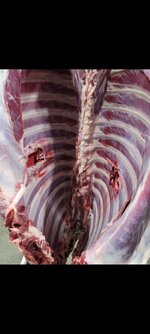There's a lot of very experienced, very well-intentioned woodsmen and hunters that have contributed to our collective lore over the years. However, there wasn't a lot of rigor applied to the lore or the observations that formed it. Like any other human endeavor, people generalized from very small sample sizes (in some cases, singular) and the anecdotes of others. If we're being honest, more than one "the bullet didn't perform like it should have" story is actually a "I made a bad shot, but don't want to take the blame" story. More than one bad shot has come down to equipment that didn't perform (e.g. a scope that didn't hold its zero) or a shooter that couldn't perform with the equipment (that lightweight ultra-mag).
The end result of all that has been some very interesting trends. The American hunter, since I was growing up in the 80s and 90s and started paying attention, has been absolutely obsessed with weight retention and, along with that, penetration. This was interesting alongside a not insignificant amount of material then and since that highlighted that fragmentation and/or fragmentary projectiles were far more effective at creating wide, emphatic wounds - that shedding weight enhanced wounding. We ended up in a sort of weird limbo where people wanted lots of mass, lots of velocity... but a bullet that wouldn't either of those effectively to actually do work. Perhaps it even makes sense for shooters that hit the woods a few days a year and consider the "Texas heart shot" appropriate.
I think the BIG driver of change is the increased interest in both long-range hunting and precision shooting. A good hunting bullet is certainly precise... but many aren't particularly good and aren't very aerodynamic when they are. I remember John Lazzeroni (who made RUM level cartridges before it was cool) stating "where you hit is the most important thing, match bullets allow me to do that best, so that's what I use" (words to that effect) when asked about why he hunted with/loaded match bullets for his cartridges. I think a lot of people picked up on that, and a lot of hunters who knew shot placement was THE most important thing started using match bullets. Along the way, they realized that a well-designed, thin jacketed match bullet was capable of dramatic, emphatic wounding... wounding FAR better than monolithic, core-bonded, tough bullets.
Over time, the folks using match bullets and other projectiles that effectively shed weight to enhance wounding realized that you don't need nearly as much "gun" (i.e. mass, velocity, powder, etc.) if you don't select bullets that work about as well as broadhead and instead choose something suited to the task at hand. It's just starting to become more mainstream now.
 rokslide.com
rokslide.com


